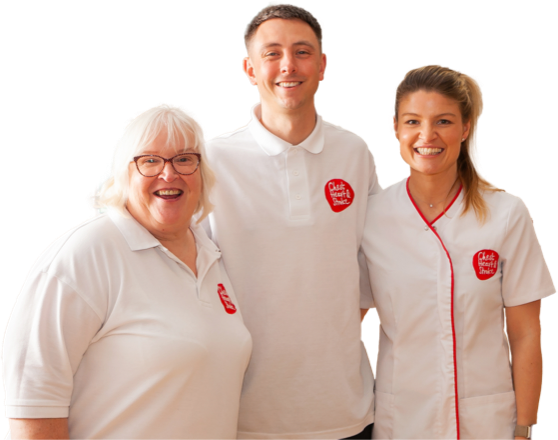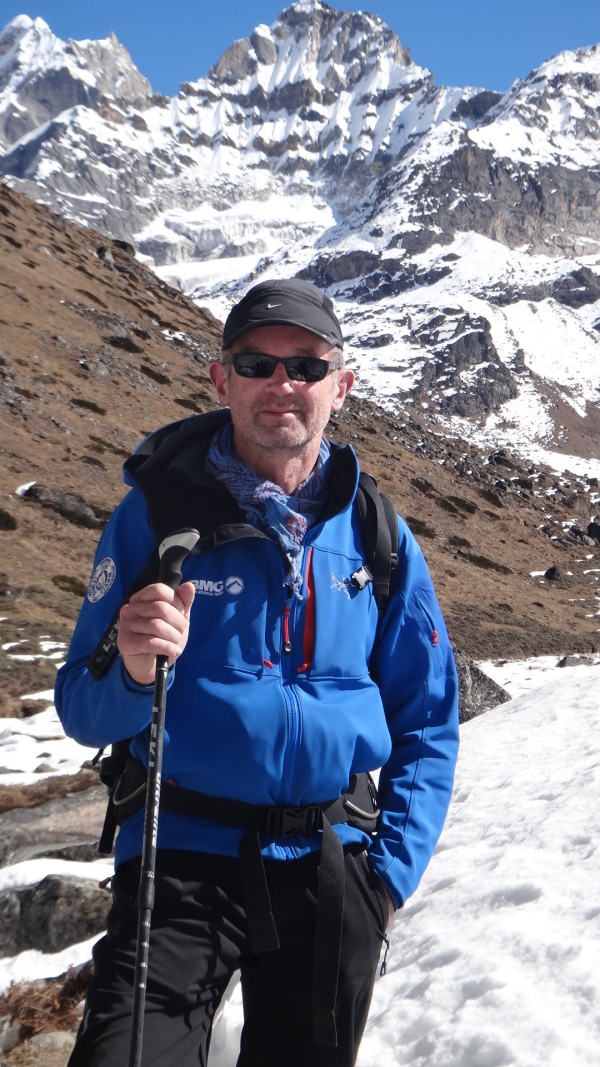
This Christmas, local health charity Northern Ireland Chest Heart & Stroke (NICHS) is appealing to the public to help them give the gift of hope to the thousands of local people who are affected by chest, heart and stroke illnesses every year. NICHS gives hope to those that need it through a range of services including their life-changing care services, educational school programmes, and Family Support service. The charity also understands that sometimes nothing gives hope quite like the sharing of experiences from previous chest, heart and stroke condition survivors. These stories help to inform, inspire and encourage patients and their families as they face difficult times and show that there is hope after a serious health event.
These stories come from people like Dawson Stelfox. Dawson is well known as the first person from Ireland to reach the summit of Mount Everest, which he did 30 years ago in 1993. Dawson had an unexpected, life-changing stroke at the age of just 64 in December last year. He may seem an unlikely candidate for experiencing ill health but Dawson’s story highlights how a stroke can happen to anyone, at any time, no matter their age, how fit they might be or how healthy a life they might lead.
Dawson understands first-hand the hope NICHS can give people living with a chest, heart or stroke condition as he completed their Post Rehab Exercise Programme (PREP). He found the charity’s support was very important to his recovery journey and is sharing his story to give the gift of hope to other stroke survivors to keep pushing on their own recovery journeys and see there is still hope after a stroke.
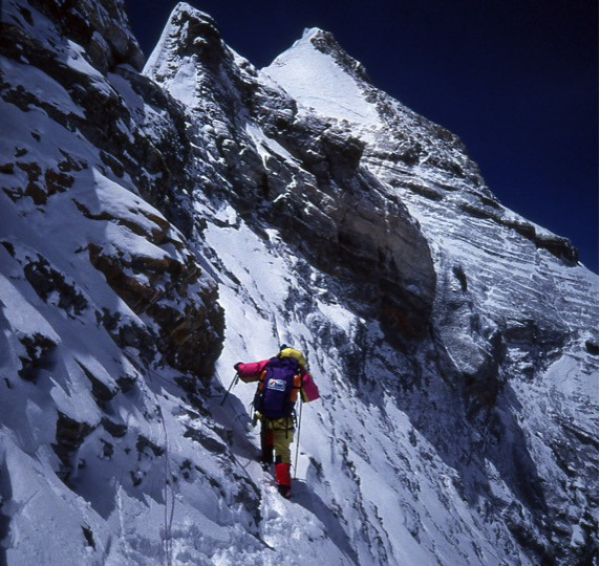
Dawson explains; “I've always been generally pretty fit and healthy from being a regular hill walker and rock climber. I had actually been out in the Mournes two days before the first symptoms of my stroke started.”
“I woke up one morning at 5am and I was totally numb down my left-hand side. I immediately thought I was experiencing a TIA, often known as a ‘mini stroke’, and my wife took me to the Royal Victoria Hospital. We were probably at the hospital within 40 minutes of my symptoms beginning but by that time the feeling of numbness was starting to wear off. When the medial team examined me, they immediately picked up that I had very high blood pressure. I was completely unaware of that as I wasn't feeling any particular symptoms of high blood pressure and I hadn’t been checking it. I had a CT scan, was prescribed medication to reduce my blood pressure and thin my blood and was sent home.”
Dawson experienced a series of similar incidents over the next few days however.
“The same thing happened the next day, so I went back to the hospital but, again, by the time I was having an MRI scan the numbness symptoms were going. Again, I was checked out and sent home. The third time it happened I was kept in hospital overnight and again the symptoms seemed to diminish, and I was sent home. The fourth time it happened however the symptoms did not diminish or go away.”
“Once again, I experienced the numbness throughout my left-hand side at five o'clock in the morning. I went to the Royal Victoria Hospital and the feeling didn't go away- I was completely numb and immobile down that side of my body. The medical team did various scans and tests and they diagnosed Capsular Warning Syndrome. What I was experiencing wasn’t a clot or bleed as such, it was a spasm in a blood vessel in my brain. It was going into spasm because of the high blood pressure, causing the feeling of numbness, but then it was releasing which is why the symptoms were going away at times. Eventually the blood vessel went into a spasm that blocked it completely which stopped the blood supply to my brain.”
Unfortunately Dawson’s stroke resulted in part of his brain being deprived of oxygen and subsequently dying. “It affected my whole left-hand side- my left leg, left arm, a little in my face. I never lost my speech completely, but it was a bit slurred and even now when I'm tired my face muscles weaken. Broadly speaking my speech and memory weren’t affected but physically I was pretty much immobile down my left side.”
Dawson spent one month in the Royal Victoria Hospital’s stroke ward and has been gradually recovering since being discharged in February. Dawson had physiotherapy and occupational therapy through the Community Stroke Team at the Lagan Valley Hospital, and it was they who pointed him in the direction of Northern Ireland Chest Heart and Stroke for further support.
“I attended two sets of NICHS’s Post Rehab Exercise Programme (PREP) which involves a combination of education and physio-developed exercises. PREP was great for me, it was very useful. It definitely helped move me on in terms of having a discipline of pushing myself physically and that combined with the physio and OT, and the exercise I was doing myself really helped.”
“What is good and different about PREP is that you are measuring yourself against time on the activities. If you have any sort of competitive spirit, like I do, you are always trying to do a bit better than the previous week. It’s not about competing with other people in the group, it’s about challenging yourself and what you can do. There is a sort of parallel to climbing and mountaineering activities in the sense that with these, you are not in competition with the other people that you are climbing with, you are in competition with the environment that you are in. That's a bit like PREP because everybody is at different stages, everybody has their own particular abilities and disabilities, and it’s all about your own individual journey.”
“Also, when you are climbing with somebody there can be times you might need their support and encouragement if you are finding things tough. That is similar to PREP in that there is great comradery at the groups, with everyone encouraging and supporting each other. There is collaboration and teamwork, like in mountaineering.”
Like many stroke survivors, Dawson found the effects of his stroke turned his world upside down. “The stroke was a huge shock to my system after always being so active. The sudden loss of capacity takes a lot of getting used to. I have a strong, determined mindset however and that definitely helps. You just have to keep going, doing the exercises, relearning your movements etc- it is all about repetition. You must do as much as you can and chalk up every little success along the way. It is a long, slow process but the good thing is you do see progress. It might be slow progress, but you can chart it and measure the differences of what you are able to do, week on week, month by month.”
“Now, I am still working with the Community Stroke Team, and I go to the gym and I’m gradually recovering. I haven’t quite fully recovered on the left side, but I can walk reasonable distances quite slowly- the furthest I have walked is four miles. I have been out walking on some roughish tracks and I’ve actually been rock climbing again on an indoor wall. I’m gradually getting my strength and coordination back- I still have quite a way to go but I’m determined to get there.”
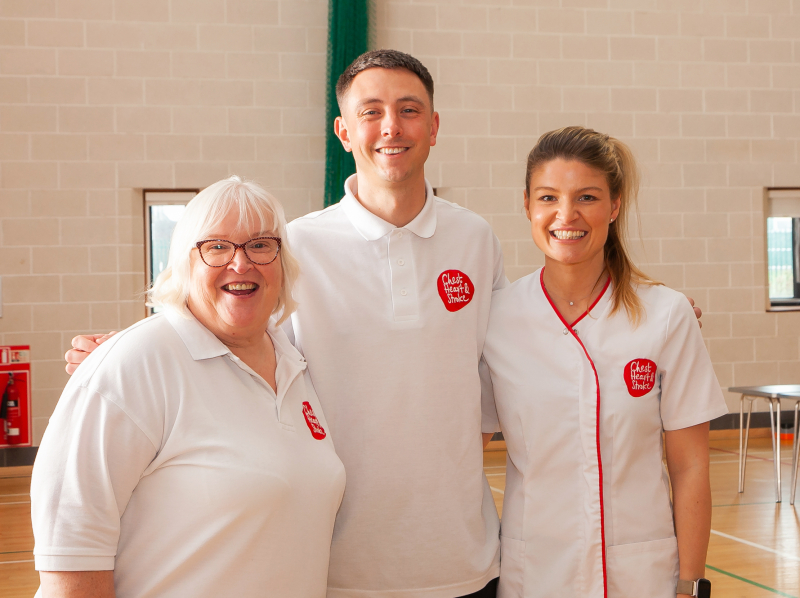
Andy Bell pictured with fellow NICHS Care Services Co-ordinators.
Andy Bell, an NICHS Care Services Co-ordinator, runs the PREP group Dawson attended. He says; “When I saw Dawson’s name come through as a referral I was really shocked. I knew Dawson from years ago when I was in school and he accompanied our Mountaineering Club on a trip to Norway. I knew how much of an active and fit person Dawson has always been and I just could not believe he had had a stroke.”
“Dawson was very determined and ambitious when he started PREP. He said he wanted to get back to hiking and climbing and pushing himself as far as possible. That was a great attitude to have. I encouraged Dawson to harness that, and it really helped him on his recovery journey. Dawson made great progress over the 12 weeks he attended PREP, and he recently showed me a video of him back climbing again which I was delighted to see.”
Andy continues, “PREP is a community-based course to give stroke survivors the time and a place to come to re-build their physical and emotional strength following their stroke. Personally, it is very rewarding to see the participants’, like Dawson, progression from joining the group in week one to when they complete the programme in week six or twelve. They are so motivated and have come so far.”
“The unique thing about PREP is that the participants are all going through the same thing and understand how it feels. At PREP we often discuss the comment many people make to stroke survivors- ‘you don’t look like you have had a stroke’- and so many people can relate to that. Dawson really is an example of that. When you talk about Dawson and his previous hiking and climbing expeditions people would never think he would be at risk of having a stroke, but it can happen to anyone, at any age.”
“I am really pleased I have been able to play a part in Dawson’s recovery journey and wish him all the best as he continues with this. We are very grateful to Dawson for sharing his story- it will help give hope to other stroke survivors, showing them there is life after a stroke and we at NICHS are here to help, every step of the way.”
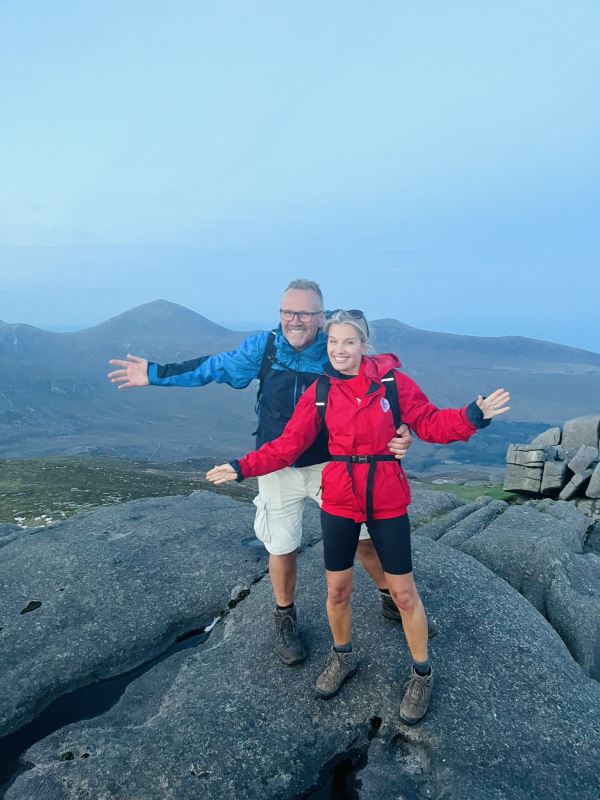
Someone who shares a determined and ambitious nature with Dawson is Jackie Trainor, Director of Income Generation at Northern Ireland Chest Heart & Stroke. Jackie is currently preparing to take on the gruelling challenge of trekking to Everest Base Camp with her husband Conor, all in aid of raising much needed funds for the charity. Jackie explains; “I have worked in the charitable sector for a number of years and have completed a significant fundraising challenge for every charity I have been lucky enough to represent. I have worked at NICHS for 6 years and now feels like the right time for me to do the same here.”
“I have done a lot of things that have been outside my comfort zone such as parachute jumps and working in areas of extreme poverty but for this challenge I really wanted to do something that would push me to my limits, physically and mentally. Two of the things I hate most are being cold and spiders- trekking in -15°C for 17 days, for up to 9 hours a day, coupled with Himalayan Jumping Spiders really will be the challenge of a lifetime for me!”
“I’ve got a determined mindset and do love to push myself however so that plus the fact I am raising funds that will genuinely help local people here will spur me on through the hard times.”
“As a charity, almost 90% of our income comes from public donations and last year we needed to raise over £3 million to be able to deliver our life-changing services. I want to do as much as I can to support our charity in raising these vital funds. The money raised from my trek will help deliver programmes like the PREP group Dawson attended, as well as support the expansion of our cardiac support services in line with our new strategy to help people across NI impacted by heart illness. I am glad I can do something to help increase the level of support NICHS can give to people affected by serious illnesses in our local communities.”
Jackie has been busy fundraising with the support of fellow trekkers, colleagues and friends over recent months and their total is currently sitting at a phenomenal £24,500. “I am just so grateful to everyone who has supported us, and the funds raised really will help make a huge difference to so many people’s lives.”
If you have been affected by a chest, heart or stroke condition and need support visit nichs.org.uk/care-and-support for further information about NICHS’s support services.
If you would like to support Jackie’s fundraising efforts, visit www.justgiving.com/page/jackie-trainor-1697572350969
